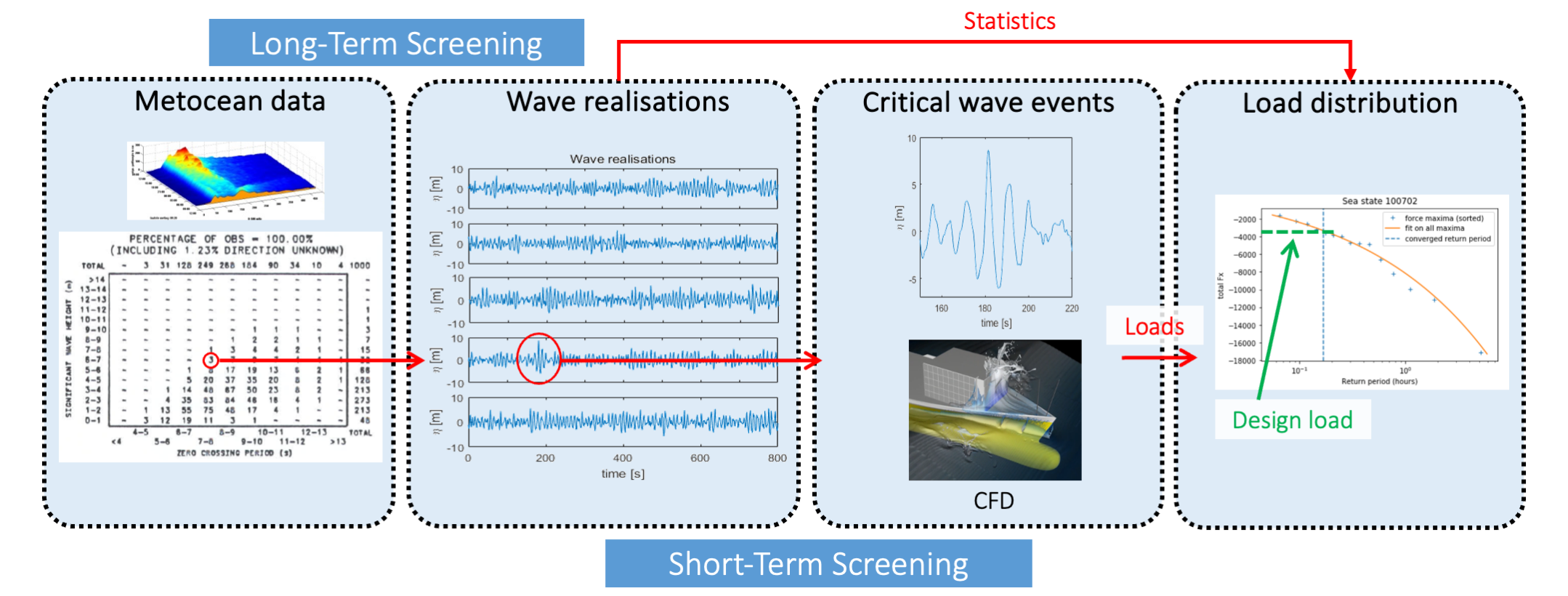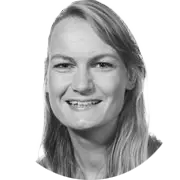crships.org



Papers
Cooperative Research Ships is a network addressing a wide range of topics in ship hydromechanics. CRS brings together shipyards, ship owners, navies, equipment suppliers, classification societies and research organisations. All just based on a gentlemen’s agreement (the ‘CRS Guidelines’) and joint decision-making at the Open Meeting and Annual General Meeting. A simple organisation to stimulate complex research.
CRS

March 2024, no. 139








Create a MARIN account to stay updated

Green water event during SCREAM experiments (left) and the result of a CFD calculation initialised using linear potential flow screening in the same event (right). (credits Arjen Koop and Tim Bunnik)




Report
Recent accidents underline the importance of designing for loads that occur due to extreme waves impacting marine structures.
This was illustrated by an accident in the North Sea in December 2023, when the cruise ship MS Maud lost the ability to navigate after a big wave smashed the windows of the bridge. No casualties were reported, but unfortunately this is not always the case. In December 2015, a crew member died when a large wave hit the living quarters of the semi-submersible platform COSL Innovator close to Norway.
Defining design loads for such wave impacts is not easy. Impacts do not happen often, and the associated loads are extremely complex to calculate. This means they have to be evaluated for very long durations in order to get enough events for a meaningful statistical analysis.
Waves and wave-induced loads are also stochastic, meaning that although they can be described with a probability distribution, they cannot be predicted precisely. The longer you sail, the higher the maximum load that you experience will be. In design, we therefore always have to associate a load with a probability of exceedance. The difficulty of requiring complex calculations for a long duration is the driver for the ‘screening approach’ (see figure).
It proved to be more difficult to find a good indicator for the ferry than for the containership, due to the large bow flare angle of the ferry. Events with a large relative wave elevation at the bow often did not lead to green water loads on the accommodation because the flare deflected the water away from the deck. We also concluded that combining non-linear incoming waves with linear indicators does not improve them enough (see movie below).
Based on what we learned from these projects, we see a future for hybrid screening models, where we select long-term sea states using potential flow methods, and do the short-term event screening using coarse mesh CFD models. We will work on a wave impact screening approach that we can apply in daily practice in the new Screening and Prediction of Extreme Conditions (SPEC) project, starting March 2024. Let us know if you want to know more about this research!
In the GreenWater project, we evaluated different indicator signals for green water impacts on a containership. We found that both potential flow and CFD on a coarse mesh can be used as a screening tool (as demonstrated in the video below). Top-performing indicators included the peaks and steepness of the relative wave elevation around the bow. Coarse mesh CFD indicators, such as water on deck or the coarse mesh green water force, perform even better but are also more computationally expensive. It was also concluded that the missing non-linearity in the potential flow indicators seemed to be the determining factor for the force peaks that were not well predicted.
This was the starting point for the SCREAM project, where we evaluated the role of the wave non-linearity in the indicators. New long-duration experiments were done with green water and slamming impacts on a ferry in oblique incoming waves. Additionally, we performed second order and fully non-linear wave calculations and used these to improve the linear potential flow indicators.
In the Cooperative Research Ships we have worked on the screening approach in two projects: CRS GreenWater (2017-2020) and CRS SCREAM (2020-2023). We did long duration experiments so we could validate the extreme values obtained by the screening approach.
Defining an indicator is not straightforward, as the biggest wave does not always lead to the largest load. The steepness of the wave or the ship motions can also be very important, so these are included in the indicator. Nowadays, CFD can predict wave impact loads rather well, but this method still comes with significant computational costs. Screening can help to select these events and their probability of occurrence, so it is possible to know how often we can expect a certain loading over the lifetime of the ship.
Using such a method, a cheap low-fidelity calculation can be run for a long time, which results in an ‘indicator signal’. The idea is that this indicator is defined in such a way that it can help to identify the critical wave events for the considered load. Once these critical events have been identified they can be run with Computational Fluid Dynamics (CFD).
Schematic idea of screening.
Green water event during the SCREAM experiments, with the ferry sailing in bow-quartering waves with a significant wave height of 8.1 m and a peak wave period of 9.4 s.
CFD reproduction of a green water event from the CRS Greenwater experiments. (credits Joop Helder)
More info




Papers
CRS
Cooperative Research Ships is a network addressing a wide range of topics in ship hydromechanics. CRS brings together shipyards, ship owners, navies, equipment suppliers, classification societies and research organisations. All just based on a gentlemen’s agreement (the ‘CRS Guidelines’) and joint decision-making at the Open Meeting and Annual General Meeting. A simple organisation to stimulate complex research.
Green water event during SCREAM experiments (left) and the result of a CFD calculation initialised using linear potential flow screening in the same event (right). (credits Arjen Koop and Tim Bunnik)
CFD reproduction of a green water event from the CRS Greenwater experiments. (credits Joop Helder)
It proved to be more difficult to find a good indicator for the ferry than for the containership, due to the large bow flare angle of the ferry. Events with a large relative wave elevation at the bow often did not lead to green water loads on the accommodation because the flare deflected the water away from the deck. We also concluded that combining non-linear incoming waves with linear indicators does not improve them enough (see movie below).
Based on what we learned from these projects, we see a future for hybrid screening models, where we select long-term sea states using potential flow methods, and do the short-term event screening using coarse mesh CFD models. We will work on a wave impact screening approach that we can apply in daily practice in the new Screening and Prediction of Extreme Conditions (SPEC) project, starting March 2024. Let us know if you want to know more about this research!
In the GreenWater project, we evaluated different indicator signals for green water impacts on a containership. We found that both potential flow and CFD on a coarse mesh can be used as a screening tool (as demonstrated in the video below). Top-performing indicators included the peaks and steepness of the relative wave elevation around the bow. Coarse mesh CFD indicators, such as water on deck or the coarse mesh green water force, perform even better but are also more computationally expensive. It was also concluded that the missing non-linearity in the potential flow indicators seemed to be the determining factor for the force peaks that were not well predicted.
This was the starting point for the SCREAM project, where we evaluated the role of the wave non-linearity in the indicators. New long-duration experiments were done with green water and slamming impacts on a ferry in oblique incoming waves. Additionally, we performed second order and fully non-linear wave calculations and used these to improve the linear potential flow indicators.
Green water event during the SCREAM experiments, with the ferry sailing in bow-quartering waves with a significant wave height of 8.1 m and a peak wave period of 9.4 s.
In the Cooperative Research Ships we have worked on the screening approach in two projects: CRS GreenWater (2017-2020) and CRS SCREAM (2020-2023). We did long duration experiments so we could validate the extreme values obtained by the screening approach.
Defining an indicator is not straightforward, as the biggest wave does not always lead to the largest load. The steepness of the wave or the ship motions can also be very important, so these are included in the indicator. Nowadays, CFD can predict wave impact loads rather well, but this method still comes with significant computational costs. Screening can help to select these events and their probability of occurrence, so it is possible to know how often we can expect a certain loading over the lifetime of the ship.
Using such a method, a cheap low-fidelity calculation can be run for a long time, which results in an ‘indicator signal’. The idea is that this indicator is defined in such a way that it can help to identify the critical wave events for the considered load. Once these critical events have been identified they can be run with Computational Fluid Dynamics (CFD).
Schematic idea of screening.

Defining design loads for such wave impacts is not easy. Impacts do not happen often, and the associated loads are extremely complex to calculate. This means they have to be evaluated for very long durations in order to get enough events for a meaningful statistical analysis.
Waves and wave-induced loads are also stochastic, meaning that although they can be described with a probability distribution, they cannot be predicted precisely. The longer you sail, the higher the maximum load that you experience will be. In design, we therefore always have to associate a load with a probability of exceedance. The difficulty of requiring complex calculations for a long duration is the driver for the ‘screening approach’ (see figure).
This was illustrated by an accident in the North Sea in December 2023, when the cruise ship MS Maud lost the ability to navigate after a big wave smashed the windows of the bridge. No casualties were reported, but unfortunately this is not always the case. In December 2015, a crew member died when a large wave hit the living quarters of the semi-submersible platform COSL Innovator close to Norway.
Recent accidents underline the importance of designing for loads that occur due to extreme waves impacting marine structures.
March 2024, no. 139
crships.org


Create a MARIN account to stay updated

More info




Report





